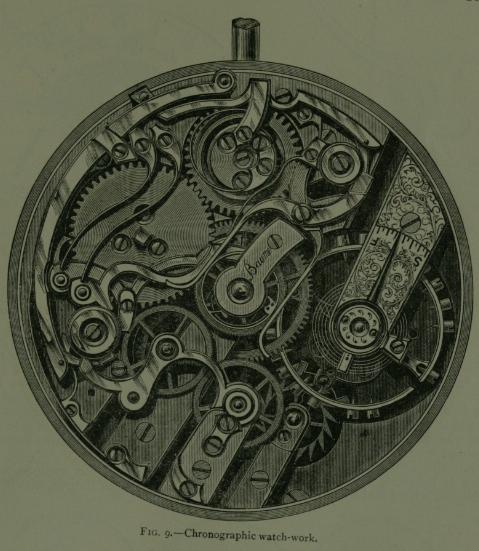How neurons select the best links.
When contemplating a high-technology device, one can often realize how much the design and the different pieces have been optimized for the goal they try to achieve. It does not have to be a modern-day technological device; think for example in a classic, mechanical clock: all its parts are assembled in a clean and neat fashion, so that the full structure is able to reach a high precision measuring time. If one or several pieces would be a little bit smaller, or slightly displaced from their original location, the whole machine would stop working properly.

In the brain, connections between neurons – the synapses – can be sometimes thought as these little pieces of machinery. In certain situations, synaptic connections have to be extremely specific in their strength, their dynamics (if this strength varies over short time scales, for instance) or in their length. Sensory systems have traditionally been considered as a good example of that, since a precise neuronal and synaptic structure would allow an optimal transmission of information about the external world from the senses to higher processing areas in the brain. A paradigmatical example of this situation is found in the auditory system, and in particular in the mechanism of sound localization in the barn owl. The neural structure known as auditory brainstem relies on very precise synaptic connections to measure interaural time differences (ITD, which are small timing differences between signals arriving from left and right ears). The precise estimation of these temporal differences, often at sub-millisecond range, allows the barn owl to infer the spatial location of the source of the sound – a mouse or any other prey. This same mechanism allow humans to estimate the location of sound sources as well, even without relying on other senses such as vision. When someone call us in the middle of the street, we are almost instantaneously able to locate the person because of these precise synapses in the auditory brainstem.
But how are the synapses able to achieve such precision? A lot of factors come at play to determine the response properties of synapses, and just a small deviation respect the optimal scheme would ruin the timing needed for sound localization. The answer to this riddle was found by Gerstner and colleagues 1, which proposed that a learning rule called spike timing dependent plasticity (STDP, which was recently discovered experimentally at that moment) was able to selectively potentiate the synapses which provided just the right timing for the sound localization mechanism to work, while slowly weakened the other useless synaptic connections until they eventually fade away.
Recently, this same STDP rule has been proposed, by a group of researchers from the University of Melbourne in Australia and the RIKEN Brain Science Institute in Japan, as a possible mechanism to shape synaptic connections in other kind of neural circuits. In many areas of the brain, the activity of neurons is strongly driven by periodic oscillations of different origins (from sensory areas driven by external stimuli, or internally generated at central pattern generators, for instance). Robert Kerr and colleagues have recently shown 2, using a mathematical model of a population of interconnected neurons, that the existence of STDP rules is able to shape the neural network to respond maximally to this external frequency. And it does it in the same way as for the high-precision auditory circuit in the brainstem: the learning rule potentiates the strength of those synapses that are “in tune” with the external frequency, while slowly removing the others. These “in tune” synapses would be the ones characterized by a precise temporal delay matching the period of the signal. That way, a neuron responds to a given peak of the periodic signal at time T0, sends its response through its synapses (which have a temporal delay D), and this response arrives at the neighboring neurons at time T0+D. Only when the synaptic delay D is equal to the period of the signal, this moment T0+D will coincide with the next peak of the external signal, thus increasing the chances of the neighboring neurons to respond.

Using this potentiation of “in tune” synapses, the neural population ends up being highly sensitive to this input, and the particular frequency of the signal is somehow learned by the network, which is now able to respond maximally when this – and only this – frequency is presented. The researchers also extend this basic mechanism to situations in which several frequencies are presented to the network, and they also discuss the importance of this effect to explain a well famous auditory illusion, the missing fundamental pitch perception (you can learn about this illusion and experience it here 3).
A neural network which responds maximally to a particular input frequency can work very well as a frequency discriminator, and eventually, as a good clock. And, as with the Swiss clockmakers, a high precision in the machinery involved – the synapses – is needed to achieve a good final result. It seems that neurons, as the Swiss, are good at building clocks.
References
- W. Gerstner, R. Kempter, J. L. van Hemmen, H. Wagner, A neuronal learning rule for sub-millisecond temporal coding. Nature 383: 76-81, 1996 ↩
- R. R. Kerr, A. N. Burkitt, D. A. Thomas, M. Gilson, and D. B. Grayden, Delay Selection by Spike-Timing-Dependent Plasticity in Recurrent Networks of Spiking Neurons Receiving Oscillatory Inputs. PLoS Computational Biology, 9 (2) e1002897, 2013 ↩
- http://auditoryneuroscience.com/?q=topics/missing-fundamental ↩